I embarked on a set of major changes that touch a lot of different areas of the application, have required changes to the database schema, our objects and presentation code. I started at rev.1101 You could consider it a perfect case for creating a Branch to be later merged and integrated back into the Trunk once it was tested and complete.
But I didn't create a new Branch. I kept working on the Trunk instead.

The Trunk is now at rev.1116 and I'm in the unenviable (?) position that I have to perform some bugfixes on the revision about 15 versions ago which is the current release in production and then release bugfixed "rev.1101+bugfixes" to production without any of the work from revs 1102-1116.
Question: How do I "recover" the Trunk and move all the recent changes to a Branch? Do I create a Branch from what's in the Trunk right now and that becomes /Branches/MajorChangeSet, then revert the Trunk back to rev.1101, treat that as the now-official Trunk and start work on the bugfixes there?

UPDATE: I followed the procedure recommended by ChrisH below (according to the mockup above) and we're now in great shape. We have been continuing to update the "rev. 1102 production" with fixes and minor feature enhancements. These have been painless and easy to merge into the trunk to make sure that these changes also make it into our new development effort. Thanks all!